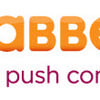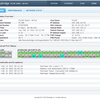In any event, at 42Kbit/s that gives you 6 VoIP calls with barely any no room left for data/Internet. So you'd have to knock that down to maybe 5 simultaneous VoIP calls. At 90Kbits/s you can have 2 VoIP calls with some room left for data. Obviously, using the G.711 codec is impractical if you want a converged voice and data network. However, even going with G.729a (5 simultaneous calls) you have to remember that this is shared bandwidth - so spikes in users bandwidth utilization can kill the VoIP call quality. What's the solution? I know what you're going to say. The answer is "QoS"!
Well, maybe yes and maybe no. According to Powernet, traditional QoS techniques do not work very well, especially for voice carried over bandwidth links less than 1000Kbit/s. Powernet explained that even with traditional QoS turned on and voice data given higher priority, it still gets delayed because it has to wait for a free slot on the link in order to be sent. This causes jitter and other voice quality issues. Also, standard QoS techniques can not allocate more than 70% of the available link bandwidth reliably. The net effect of this is that on a standard ADSL link, 3 calls is the maximum that can be achieved with good VoIP sound quality and where Internet data is present.
Powernet's QoS techniques on the other hand allow for dynamic blending of voice and data using their QoS that allows full utilization of all the bandwidth you purchased. Thus, you are able to get SIP trunking of at least 28 ports with 256Kbits/s upstream or even 60 ports with only 768Kbps upstream bandwidth. At these port densities you can even replace traditional E1/T1 circuits! Their product also has a built-in switch-over to secondary ISP for fault tolerance. ViBE provides not only byte level QoS but also RTP header compression as well to reduce bandwidth utilization.
Here's a typical scenario:

Powernet's ViBE technology was launched today and they are looking for resellers for the product. That also includes SIP trunking service providers looking to deploy business VoIP in the SMB space.
Tony Tugulu, CEO at Powernet said, “VoIP often gets a bad press in the business community as too many providers are offering a service that is unreliable, absurdly limited in concurrent users or prohibitively expensive. ViBE is a real game changer because it resolves these issues in a single stroke, leading to dramatic cost savings, increased convenience and reliability.”
Powernet explained that it has been difficult to guarantee business-quality calls over an ADSL broadband connection due to voice and data competing over bandwidth. ViBE overcomes this problem by giving priority to voice packets over any kind of connection (ADSL, Ethernet, Satellite or even 3G) whilst maintaining optimum voice quality and supporting multiple concurrent calls without any compromise to data transfer rates.
The ViBE technology offers three key benefits to business users:
- Quality of Service – With traditional VoIP, it’s not uncommon to see jitter and latency approaching 100ms, causing delays and interruptions even with only one call. By contrast, ViBE sees the number reduced to around the 5ms mark, becoming effectively zero in good conditions.
- Redundancy - ViBE can bond multiple lines together. The redundancy guarantees that if one line fails then the call may still continue uninterrupted using the other connection, almost entirely eliminates the possibility of dropped calls.
- Analytics - ViBE monitors your connection without any interference or impact on traffic, giving you up-to-date information regarding performance and uptime.
ViBE is now available. Go here for more info.













